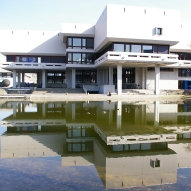| Dokumentenart: | Artikel | ||||||||||||||||||||||||||
|---|---|---|---|---|---|---|---|---|---|---|---|---|---|---|---|---|---|---|---|---|---|---|---|---|---|---|---|
| Titel eines Journals oder einer Zeitschrift: | Journal of molecular biology | ||||||||||||||||||||||||||
| Band: | 372 | ||||||||||||||||||||||||||
| Nummer des Zeitschriftenheftes oder des Kapitels: | 1 | ||||||||||||||||||||||||||
| Seitenbereich: | S. 114-29 | ||||||||||||||||||||||||||
| Datum: | 2007 | ||||||||||||||||||||||||||
| Institutionen: | Biologie und Vorklinische Medizin > Institut für Biophysik und physikalische Biochemie > Prof. Dr. Reinhard Sterner | ||||||||||||||||||||||||||
| Identifikationsnummer: |
| ||||||||||||||||||||||||||
| Klassifikation: |
| ||||||||||||||||||||||||||
| Dewey-Dezimal-Klassifikation: | 500 Naturwissenschaften und Mathematik > 570 Biowissenschaften, Biologie | ||||||||||||||||||||||||||
| Status: | Veröffentlicht | ||||||||||||||||||||||||||
| Begutachtet: | Ja, diese Version wurde begutachtet | ||||||||||||||||||||||||||
| An der Universität Regensburg entstanden: | Ja | ||||||||||||||||||||||||||
| Dokumenten-ID: | 13672 |
Zusammenfassung
It has been suggested that the common (betaalpha)(8)-barrel enzyme fold has evolved by the duplication and fusion of identical (betaalpha)(4)-half barrels, followed by the optimisation of their interface. In our attempts to reconstruct these events in vitro we have previously linked in tandem two copies of the C-terminal half barrel HisF-C of imidazole glycerol phosphate synthase from Thermotoga ...

Zusammenfassung
It has been suggested that the common (betaalpha)(8)-barrel enzyme fold has evolved by the duplication and fusion of identical (betaalpha)(4)-half barrels, followed by the optimisation of their interface. In our attempts to reconstruct these events in vitro we have previously linked in tandem two copies of the C-terminal half barrel HisF-C of imidazole glycerol phosphate synthase from Thermotoga maritima and subsequently reconstituted in the fusion construct HisF-CC a salt bridge cluster present in wild-type HisF. The resulting recombinant protein HisF-C*C, which was produced in an insoluble form and unfolded with low cooperativity at moderate urea concentrations has now been stabilised and solubilised by a combination of random mutagenesis and selection in vivo. For this purpose, Escherichia coli cells were transformed with a plasmid-based gene library encoding HisF-C*C variants fused to chloramphenicol acetyltransferase (CAT). Stable and soluble variants were identified by the survival of host cells on solid medium containing high concentrations of the antibiotic. The selected HisF-C*C proteins, which were characterised in vitro in the absence of CAT, contained eight different amino acid substitutions. One of the exchanges (Y143C) stabilised HisF-C*C by the formation of an intermolecular disulfide bond. Three of the substitutions (G245R, V248M, L250Q) were located in the long loop connecting the two HisF-C copies, whose subsequent truncation from 13 to 5 residues yielded the stabilised variant HisF-C*C Delta. From the remaining substitutions, Y143H and V234M were most beneficial, and molecular dynamics simulations suggest that they strengthen the interactions between the half barrels by establishing a hydrogen-bonding network and an extensive hydrophobic cluster, respectively. By combining the loop deletion of HisF-C*C Delta with the Y143H and V234M substitutions, the variant HisF-C**C was generated. Recombinant HisF-C**C is produced in soluble form, forms a pure monomer with its tryptophan residues shielded from solvent and unfolds with similar cooperativity as HisF. Our results show that, starting from two identical and fused half barrels, few amino acid exchanges are sufficient to generate a highly stable and compact (betaalpha)(8)-barrel protein with wild-type like structural properties.
Metadaten zuletzt geändert: 29 Sep 2021 07:37



 Altmetric
Altmetric